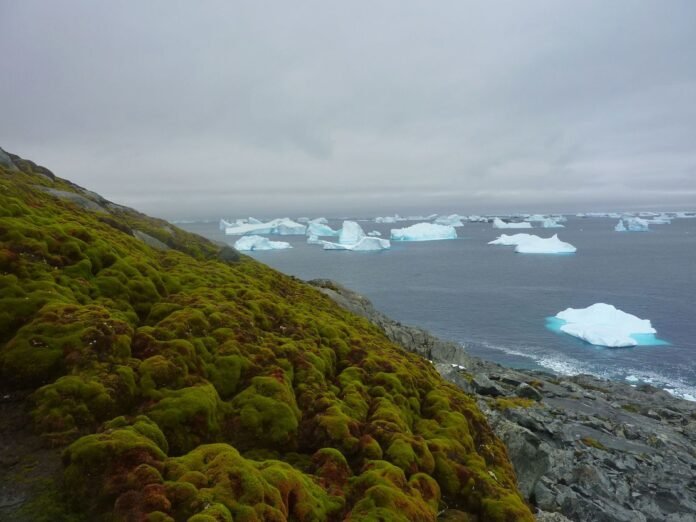
Antarctica, a frozen desert known for its icy expanse, harsh blizzards, and resilient wildlife like penguins and seals, is undergoing an unexpected transformation. Global warming and climate change are now causing parts of this frigid continent to rapidly turn green. Satellite imagery reveals that the plant-covered area of the Antarctic Peninsula has expanded nearly 14 times over the last 35 years, a stunning development that signals significant changes to the region’s fragile ecosystem.
A Study of Rapid Greening
A recent study, using images captured by NASA’s and the US Geological Survey’s Landsat satellites, examined the Antarctic Peninsula from 1986 to 2021. This peninsula, a finger-like stretch of land jutting towards South America, is warming faster than most other parts of the planet. The study specifically looked at plant growth during the Antarctic summer’s end in March, which is the peak growing season for vegetation in this icy environment.
The results are startling. In 1986, less than 1 square kilometer of the peninsula was covered in plants. By 2021, that area had grown to nearly 12 square kilometers. Even more concerning is that between 2016 and 2021, the rate of plant expansion increased by 33%, far outpacing the overall growth observed over the entire 35-year study period. This rapid greening is unprecedented for the region.
Climate Change: The Driving Force
Experts point to climate change as the main culprit behind Antarctica’s shifting landscape. Since 1950, temperatures on the Antarctic Peninsula have risen by nearly 3°C, a much larger increase than seen in most parts of the world. This dramatic rise in temperature has allowed plants to thrive where ice once dominated. “It’s the beginning of a dramatic transformation,” says Olly Bartlett, a remote-sensing specialist at the University of Hertfordshire and co-author of the study published in Nature Geoscience.
The findings raise alarm bells for scientists around the world. “These numbers shocked us,” says Thomas Roland, an environmental scientist at the University of Exeter, UK, and another co-author of the study. He stresses that the rapid greening highlights the unprecedented changes that human activities are imposing on Earth’s climate. “It’s simply that rate of change in an extremely isolated, extremely vulnerable area that causes the alarm,” he adds.
A Broader Perspective
Jasmine Lee, a conservation scientist at the British Antarctic Survey, also underscores the significance of the research. While previous studies have suggested that vegetation on the Antarctic Peninsula is responding to climate change, this is the first large-scale study to confirm the extent of the transformation across the entire region. “It’s really important to see the whole picture,” she told Nature, noting that this kind of comprehensive analysis is crucial for understanding the full impact of climate change on the world’s most isolated ecosystems.
What Does This Mean for Antarctica?
The rapid expansion of greenery in Antarctica marks a major shift for the continent’s ecosystem. As plants encroach on what was once an exclusively icy terrain, the balance of life in the region could change dramatically. Animals that depend on icy conditions, such as penguins and seals, may be forced to adapt to the new environment or face survival challenges. Meanwhile, the increase in plant life could open the door to other species migrating to the region, further altering the delicate ecosystem.
The transformation of Antarctica from white to green serves as a vivid reminder of the profound impact climate change is having on our planet. The frozen continent, once thought to be untouched by global warming, is now becoming a symbol of the urgent need to address environmental challenges. As Roland warns, the “phenomenal” rate of change in this vulnerable region highlights just how severe the climate crisis has become.
In the coming years, researchers will continue to monitor Antarctica’s shifting landscape, but one thing is clear: the frozen world is rapidly thawing, and the implications are vast.

